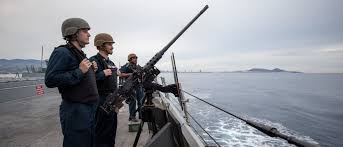On Tuesday, December 26, the U.S. Navy destroyer and F/A-18 Super Hornets successfully intercepted 12 suicide drones, three anti-ship ballistic missiles, and two land attack cruise missiles fired by Iran-backed rebels. According to U.S. Central Command, the attack commenced at 6:30 am and persisted for 10 hours.
‘U.S. assets, including the USS LABOON (DDG 58) and F/A-18 Super Hornets from the Eisenhower Carrier Strike Group, successfully intercepted twelve one-way attack drones, three anti-ship ballistic missiles, and two land attack cruise missiles in the Southern Red Sea. The incident occurred over a 10-hour period starting at approximately 6:30 a.m. (Sanaa time) on December 26,’ Centcom reported on X.
‘There was no damage to ships in the area, and no reported injuries.’
This event followed President Joe Biden’s authorization of retaliatory strikes against Iranian-backed militias in Iraq, prompted by strikes on a U.S. airbase in Erbil, resulting in three U.S. troops’ injuries, one critically.
On Saturday, Laboon successfully intercepted four unmanned aerial vehicles in the Red Sea. Subsequently, Laboon responded to distress calls from two commercial vessels under attack, including the M/V Blaamanen, a Norwegian-flagged chemical tanker, reporting a near miss, and the M/V Saibaba, a Gabon-owned, Indian-flagged crude oil tanker, hit by a one-way attack drone with no reported injuries.
A week earlier, on December 16, the Navy destroyer Carney downed 14 attack drones in the Red Sea.
CentCom, in a statement earlier this month, asserted that the U.S. has ‘every reason to believe that these attacks, while launched by the Houthis in Yemen, are fully enabled by Iran.’
On December 18, U.S. Secretary of Defense Lloyd Austin announced the establishment of a multinational task force to enhance the protection of civilian ships in the region.




